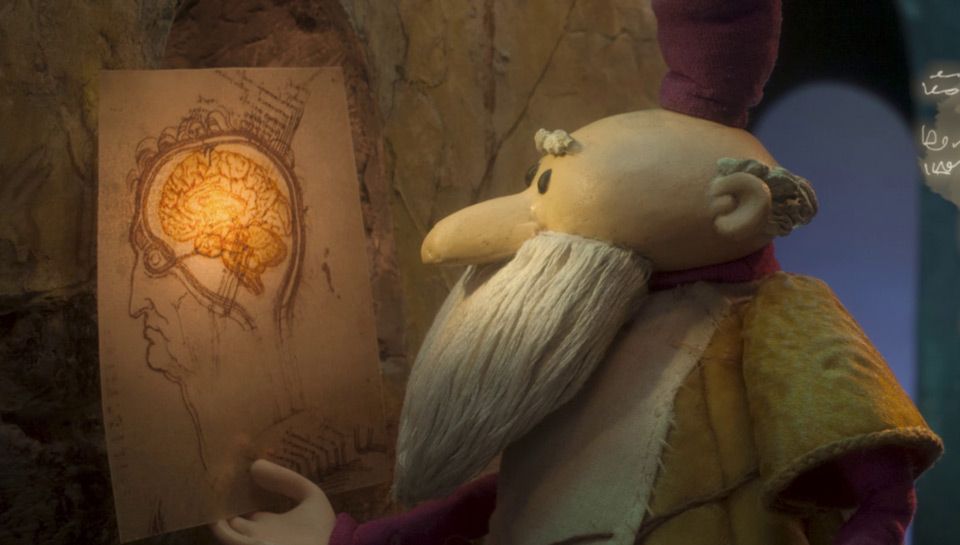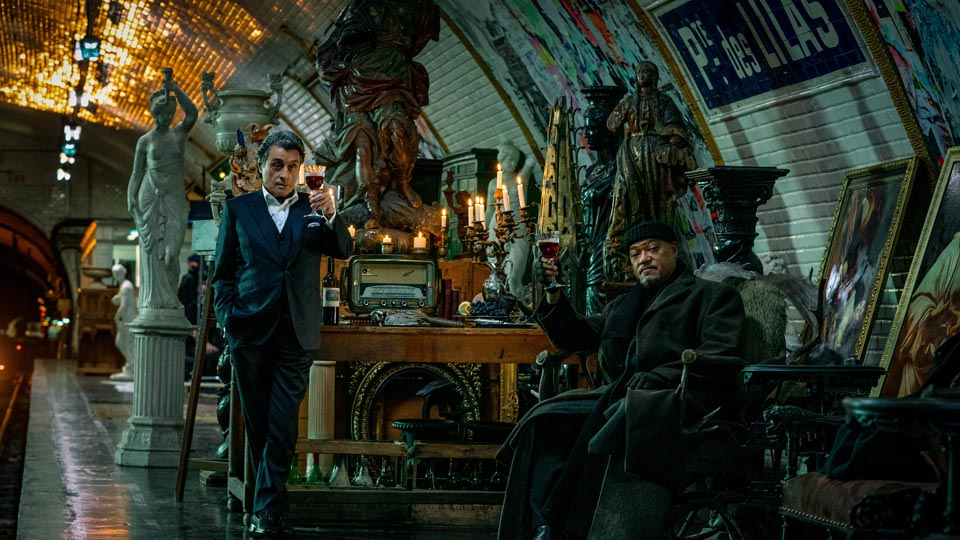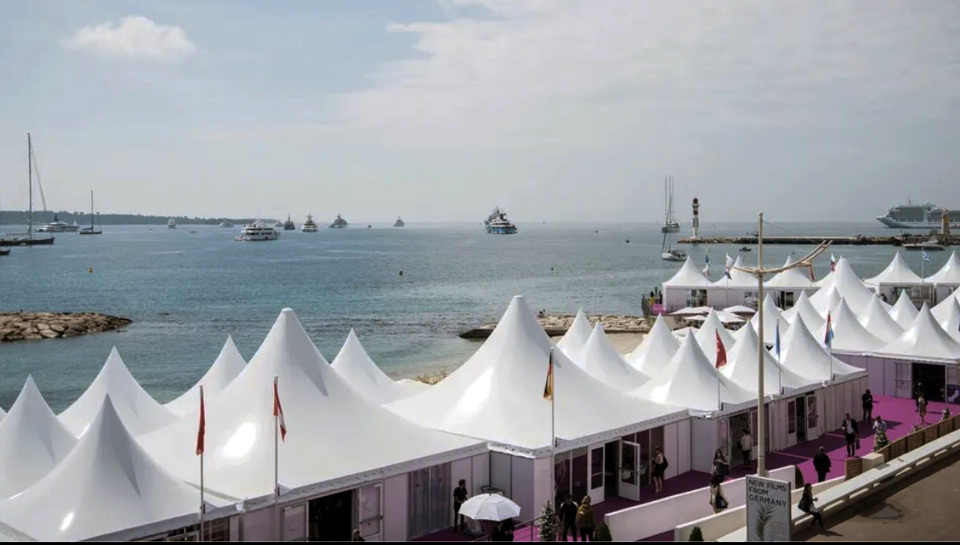What inspired the creation of Foliascope?
In 2011, Pascal Le Nôtre, cofounder of the French animation studio Folimage, intended to develop several stop-motion projects while keeping on practicing traditional animation. He wanted to make a move, switch to a new structure; therefore, he launched the production company Foliascope. In 2013, he set up a studio in Beaumont-lès-Valence in Drôme, the southernmost department of the French Auvergne-Rhône-Alpes region, with the same commitment to do stop motion. We first started to work on series before embarking on another adventure called The Tower, the first feature film entirely produced by Foliascope in 2018. We did everything on site: the production of course, but also the stop-motion technique, the 2D animation…
So Foliascope found itself in 2018 at the heart of the stop-motion boom…
On the very frontline! Two years ago, if you had asked me about the ecosystem, my answer would have been straightforward. In France, we were only a few studios doing stop motion: La Ménagerie in Toulouse, Vivement Lundi in Brittany, Manuel Cam in Paris... We would team up, join forces, coproduce a little and, all in all, we would manage to release a feature film or a series. Meanwhile, No Dogs or Italians Allowed and then Jim Capobianco's animated feature The Inventor changed everything. Absolutely everything. We literally shifted to a new dimension.
In what way?
While we were producing No Dogs or Italians Allowed, we deployed a new tool that changed our working methods: Blackmagic DaVinci Resolve software brought us to global production standards. We now work with tools that meet the standards of the Academy of Motion Picture Arts and Sciences for the Oscars. To be precise, we owe this leap to our VFX technical director, Fabrice Faivre. Just before leaving to work on Guillermo del Toro's Pinocchio, he installed all these tools here at the studio. The mere idea of working with the same standards as the biggest stop-motion production of the moment... It's exciting. And this software made it possible for us to launch The Inventor, our first American project!
What does it involve in concrete terms for Foliascope?
For The Inventor, we have benefited from the tax rebate for international production (TRIP) allocated by the Centre national du cinéma (CNC - French Film Institute). We have moved into another building with a 1 200-square-meter workspace. We have also applied for the CNC’s “Modernization Shock of the Production Apparatus’’ plan aimed at supporting the most ambitious technical projects, and have been selected. Ergo, we have designed a proper studio, eco-friendly and sustainable.
What are the artistic consequences for the studio?
They are huge. In the medium term, we will be able to work with new means, new animators who can contribute their various skills to the studio, and who have experience in feature films. Some of the animators who worked on The Inventor had worked on The Nightmare Before Christmas (1993) or Coraline (2009) by Henry Selick; others are working on Guillermo del Toro’s Pinocchio… Our new production tools enable us to have a new team, thus different projects. It's a virtuous circle.
Your international animators don’t feel too much far from home?
Not at all. Some of the technical artists say they have better working conditions here, in Ardèche and Drôme, than in Portland in the United States. Our studios are efficient, eco-friendly, sustainable. We are equipped for textile printing, 3D printing… It’s really stop motion 2.0.
You describe Foliascope as an "eco-friendly and sustainable" studio. Can you tell us more?
This specific aspect was part of Pascal Le Nôtre's project from the start. When he settled in Beaumont-lès-Valence, he did so in pre-existing buildings without taking any agricultural lands, and he respected the frame. Another example: he invested in the first LED lights when tungsten lights were still prevalent in all productions… For our part, we amplified these choices when we took over. Here at the studio, everything is wired by means of a single cable via DMX technology. As a result, our sets are entirely dedicated to animators. They can focus on animation better, there are no more wires in a mess. This technology promotes energy efficiency (LED lights, heat recovery, etc.). We were supported by the CIT (a support package for technical industries) which gave us the opportunity, among other things, to develop a ground-breaking technology for LED skies.
In light of your inventiveness, ultimately, a project like The Inventor could only be produced by your studio...
Originally, it does not come from us actually. It comes from the brilliant mind of Jim Capobianco, director, author and storyboard artist at Disney and Pixar. Ten years ago, he started to write the story of Leonardo da Vinci whose open-mindedness and creative spirit seemed to him very relevant today. He wrote a first script, made a 2D short, and started writing the story for a TV series, but couldn't convince his regular partners. He met a young independent producer, Robert Rippberger, and together they went to see all the American studios – Disney/Pixar, Warner, Apple… – in vain. From the beginning, Jim Capobianco wanted to return to stop motion. He was tired of 3D and wanted to see things come to life before his eyes. Robert and Jim then traveled around Europe to find partners and, through mutual friends, arrived at Foliascope. Robert immediately understood that we had other assets than Americans. One thing leading to another, we did a series of Zoom meetings; I read the script – which I thought was great – and we decided to go to Cartoon Movie together to pitch the project. It was a resounding success. When we were about to officially launch it, lockdown happened. It made things a little more complicated, but the partners did not give up on us. We got the tax rebate, started the production (with a co-director, Pierre-Luc Granjon) and presented the work in progress at the Annecy Festival… It's a huge project for us, and we have already received wonderful feedback.
The buzz around The Inventor proves – among other successes – how appealing stop motion has become. How do you explain it?
I am under the impression that the global market of animated feature films today rests on similar graphic standards. Most of the big movies released in theaters have a very close style after all, with a bland, flawless, almost cold side. Some works are magnificent of course, but the stop-motion technique enables to recapture the human dimension. Basically, it is animation but in the physical world. Warmer. More authentic. Some people are surprised to see major directors (like Wes Anderson or Guillermo del Toro) returning to stop motion, but it is just going back to basics! When animators use CGI (Editor’s note: computer-generated imagery), they only move elements, take key images. Exactly like we do. Except that we play with what’s tangible.
After The Inventor, what are Foliascope’s future plans?
We are going to Cartoon Forum in Toulouse in September to propose the series L'Atelier de Léonard which is based on The Inventor. The story takes place long before Leonardo da Vinci came to France. He is still in Italy at the time, serving a Turinese duke for whom he carries out many inventions with the help of a little duchess and a street urchin. Next March, we will present our new 2D film, Retour à Tomioka by Laurent Galandon and Michaël Crouzat. We are also releasing the series Music Queens for Arte: a short format on singers who have influenced feminism in the music industry, co-written by journalist Rebecca Manzoni and screenwriter Émilie Valentin, illustrated by Leslie Plée (graphic design) and directed by Amandine Fredon. In short, the dream team!
The Inventor by Jim Capobianco will hit theaters in 2023.





